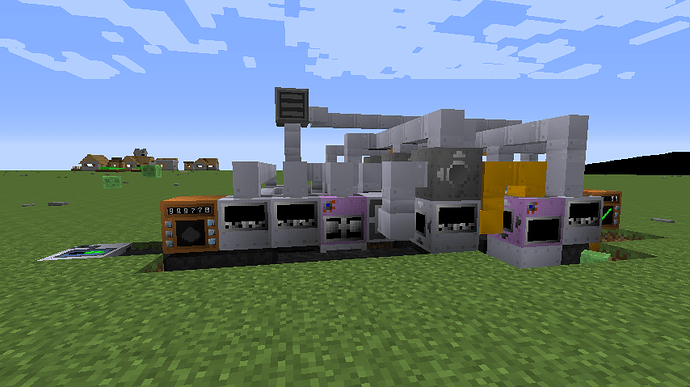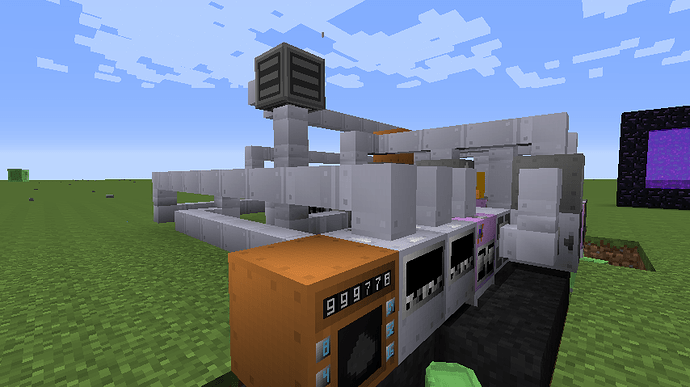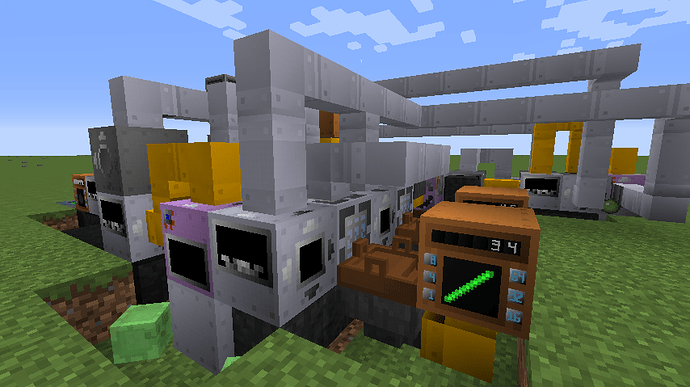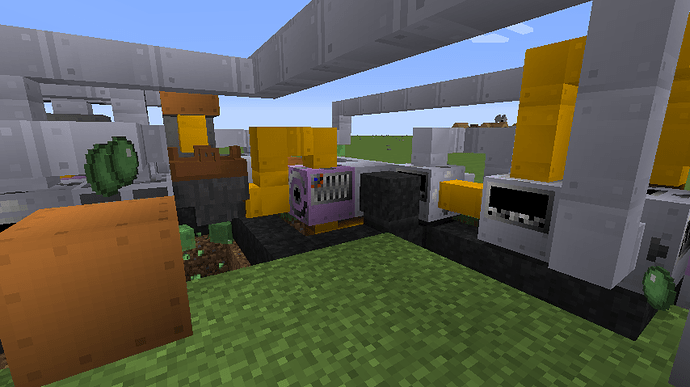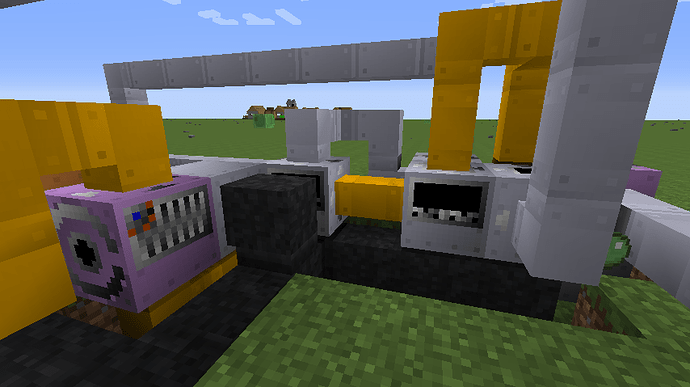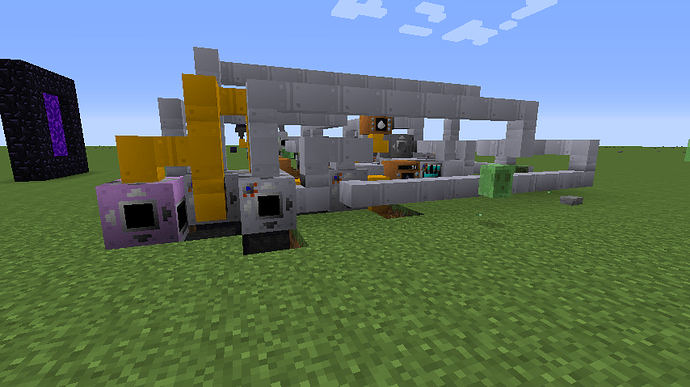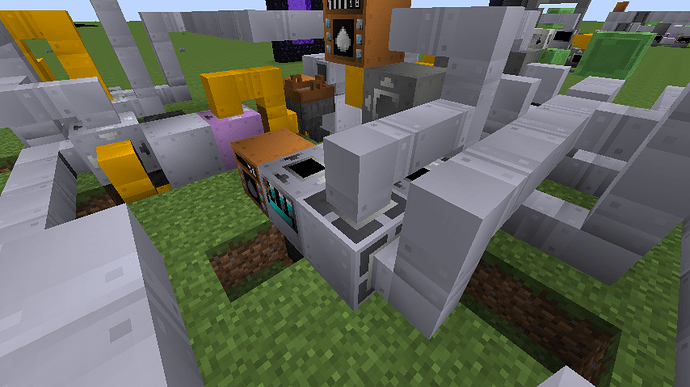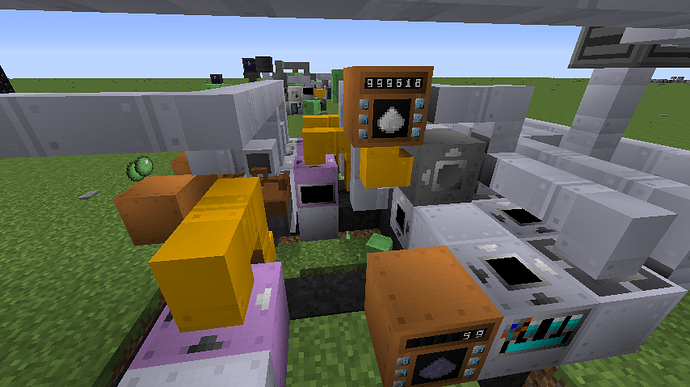Some time has passed since I implemented the reactor expansion and I’ve had enough time to experiment and think about the current balance of the system. There are some glaring issues I now see and can’t unsee.
The big bad balance blunder:
The biggest contender for “breaking the balance” or simply being overpowered as hell is the good ol 1x1 reactor core. The problem is simple: You can surround a 1x1 core with 4 2x2 cores. That mean the rod in the 1x1 core will be adjacent to eight other rods. So lets go through the scenarios of what this allows:
- Surrounded by reflectors: Since the reflectors only receive half a side of neutrons each to double, the result is the same as if it were surrounded by just four reflectors, each receiving the full power of a side.
- Surrounded by absorbers: Same as reflectors, since the output of the 1x1 core gets split over eight rods.
- Surrounded by fuel rods: The rod in the 1x1 core would receive more neutrons, since there are twice as many rods surrounding it that provide these. This allows using the 1x1 core to quickly fill up breeder rods. That makes the breeding slightly more efficient, making the 1x1 core much better than the 2x2 for it, but could still be viewed as only a slight imbalance.
- A moderator rod in the 1x1 surrounded by fuel rods: This is where the fun begins. Since the moderator rod reflects more energy based on the number of fuel rods surrounding it, there is a definite advantage in surrounding it in a 1x1, so it has eight neighbors instead of the usual four, effectively doubling the neutron output. But what about neutron maximum, shouldn’t the “output speed” be irrelevant since going over the maximum would reduce efficiency drastically? The maximum only cares about the output of the fuel rod, not about the extra neutrons created at reflectors or moderators. But doesn’t moderation from the moderator rod also reduce efficiency drastically, shouldn’t that balance it out? It reduces efficiency by 4 times. So, from a moderator you get 8 times more neutrons when surrounded by eight rods. Well, however see, that also means a fuel rod can only be adjacent to two of these, because it is in a 2x2 filled with fuel rods, meaning that only 4.5 times the neutrons get reflected (8 times 2 from the moderators plus 2 from adjacent fuel rods divided by four because that is per side, so total of 18/4), meaning it would almost be balanced out by the 4 times lower efficiency, only being an eight more efficient! Have you ever heard of surrounding a moderator in a 1x1 core with fuel rods in 1x1 cores? Did you know that in that case, the 1x1 reactor with the one fuel rod still counts as two sides to the moderator? Well, that means we speak of 8 times the neutrons reflected, even with the efficiency reduction from moderation that is still twice as efficient! And the solution can’t be to make moderation reduce efficiency even more, because that would punish the non-exploiting ways of using the moderator (in a 2x2 reactor for example) and water based reactors far too much.
So combing the 1x1 core and moderation is very problematic, especially because of how incomprehensible this behavior is for players. So how to fix this?
- Make the neutron maximum take reflected/moderated neutrons into consideration. This would be a fine solution, the maximum would have to be based of the neutrons on the rod instead of the emitted ones. This would also make measuring if you go over the limit much more intuitive. The problem of the unintuitive behavior with moderators and fuel rods in 1x1 cores next to each other is however still unresolved.
The balance of the whole system also gets shaken a but by this, because suddenly absorber rods will be much more efficient, since they effectively lower the neutrons on the fuel rod (since nothing gets reflected) and doubling the heat output of these, as well as reflectors now being nerfed comparatively, since their extra neutrons now count towards the neutron maximum. This would give absorbers the role of distinctly raising efficiency while reflectors (and moderators) are used for reaching criticality. Currently absorbers are kinda useless in critical reactors, because they are effectively equivalent to reflectors since reflectors also double the power output by doubling the neutrons instead of the heat, with no effect on the efficiency while also allowing to reach criticality.
Generally this change would also count as a nerf to reactor efficiency overall, since neutron maximums are now reached earlier. This is also probably a good change, since reactors are pretty powerful right now anyway, so effectively cutting the efficiency in half (or more with moderation) isn’t that bad. - Removing the 1x1 reactor core (crafting recipe). This change would get rid of the weird interactions between it and moderations completely. The 1x1 core is generally more powerful than the 2x2 in any conceivable way: Easier to automate, more space to automate, less resource intensive, better for breeding, easier to reach criticality with moderation.
Disabling it would tighten the balance and make reactors a bit more engaging an complex to build, since automation is much more difficult, having to use robot arms to interact with specific slots, while having to deal with less space for the automation (but certainly not impossible, because extenders exist). - Removing moderator rods (crafting recipe). This would also solve the problem with problematic behavior, but the superiority of the 1x1 reactor core over the 2x2 would still remain and water based reactors would be severely nerfed as well as the reactor system loosing a (in my totally unopinionated, not because I added this mechanic in the first place, opinion) really cool gameplay mechanic.
Personally, I would remove the 1x1 core (maybe leave a optional config setting to leave it in) and also change to neutron maximum system, as I think it would generally really improve gameplay and provide some necessary streamlining to the nuclear system while providing more complexity in reactor automation. The other really nice thing with this change: Not breaking backwards compatibility (much). Since the block would still exist and heat/neutron mechanics wouldn’t be changed, old reactor designs would still work and output the same amount of heat, only their efficiency would have changed.
Coolant balance:
The big issue out of the way, there are also other changes I would make, more specifically to the balance of the coolants. While I’m generally happy with most of them, I feel like a few coolants don’t fit their intended role: The molten metal and gas reactors.
The molten metal coolants are supposed to fill the role for breeder reactors, however they fall short in comparison to the carbon dioxide coolant. Carbon dioxide has the huge advantage of raising the factor of the fuel rod. This allows using one adjacent reflector less to reach criticality, freeing the side up for breeder rods.
This allows a critical carbon dioxide breeder reactor with U235. U235 has a factor of 1/4, which gets increased to 1/3, which means only 3 sides need to have reflectors instead of 4 to reach criticality, allowing the remaining free sided to be used by the breeder rod. In a molten metal reactor however, since molten metal coolant doesn’t increase the factor, the rod would need all 4 sides to reach criticality and thus can’t be used for breeding, only allowing for high tier fuels with a factor of 1/3 to even be used there for critical breeding.
Since the stats of the molten metal coolant reactors are generally only useful in a critical breeder anyway, this is unacceptable. I would personally give the molten metals the bonus of increasing the factor, while taking it away from carbon dioxide coolant, probably with some smaller additional balance changes to the molten metal and gas coolants in general to make them better fit their niche (or establish one for the gases) while keeping their general balance in check.
This change would however be breaking and could in the worst case lead to explosion (noises and power outages, the explosions of the cores are still disabled iirc). The potential boomers would however only be the molten metal reactors, which I doubt anybody currently uses anyway, carbon dioxide would only be getting nerfed, so power outage in the worst case but no boom.


